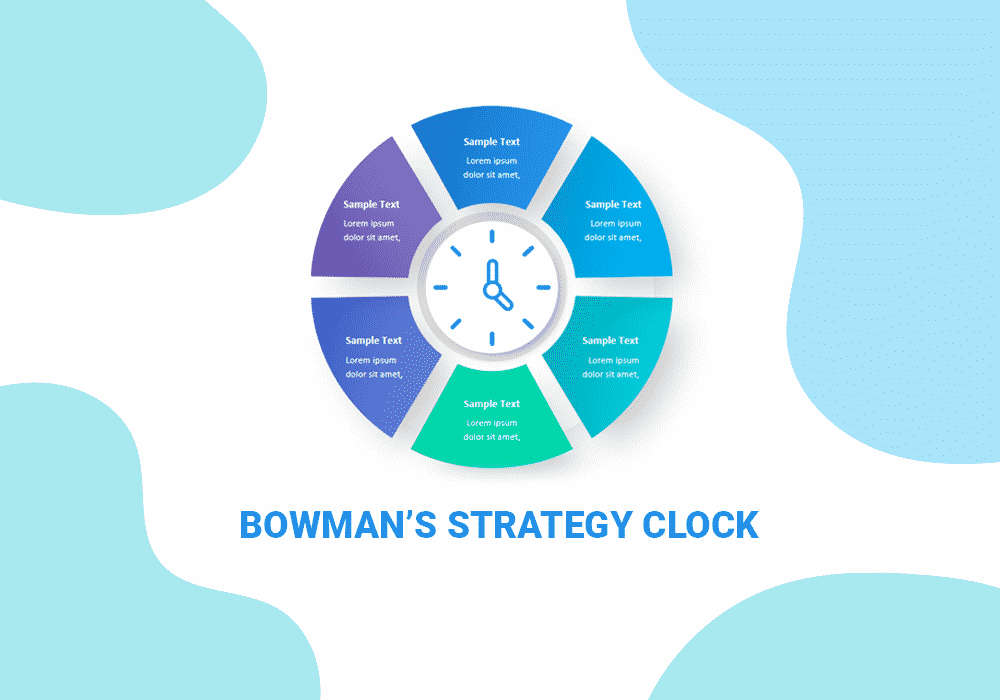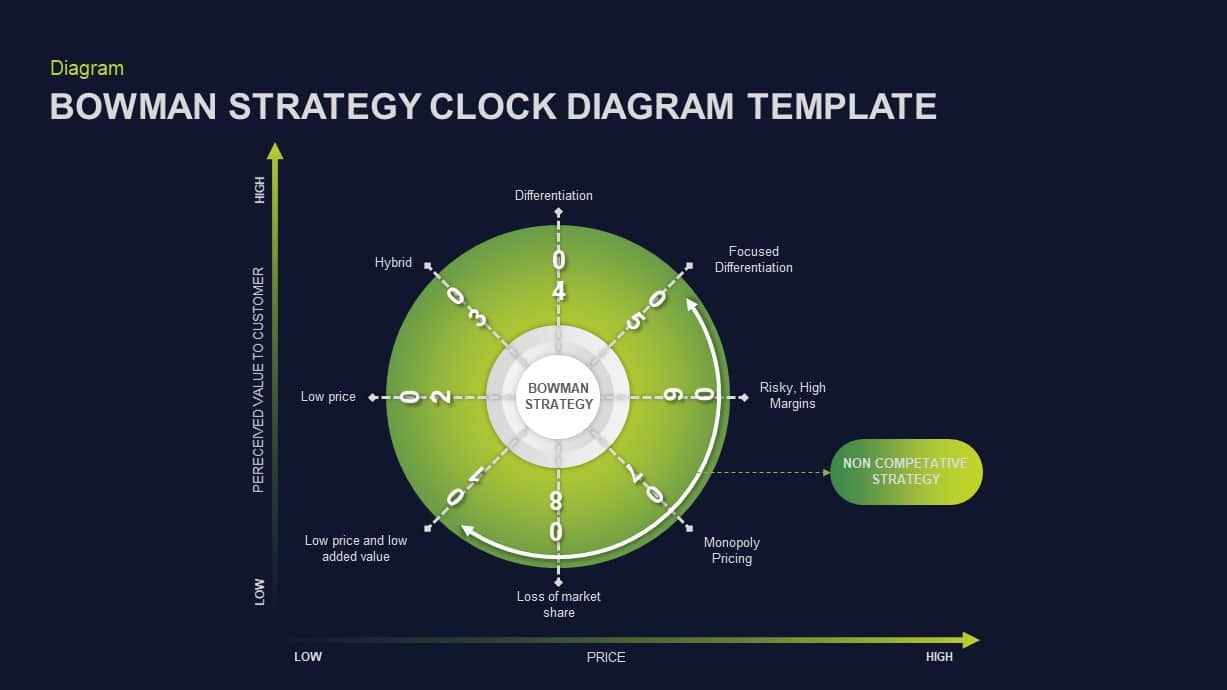Bowman’s strategy clock: would it be the right tool to accelerate your market position?

An organization without a strategy is more likely to fall on the ground. They can only avoid the risk of failure by adding creative strategic intervention on the concerned field. Whether it is business or non-profit services, an organization should have a strategy to sustain itself in the field. If you fail to create the best strategy, there is a chance that your business may fail to overcome risks despite your best efforts. We have a number of strategies that enable to create the best market position or to stand as a master in the market; Bowman’s strategy clock is a useful tool as well. It is generally used in marketing to categorize and explain the competitive position of a business or organization. It is a strategic tool that you can use to find your place in the market. This is a technique of strategic thinking that breaks down your potential strategy options into eight segments.
What is Bowman’s strategy clock?
Bowman’s strategy clock is a well-organized comprehensive strategy tool that provides alternative choices for positioning within a market, based on price and perceived value. This idea is introduced by Cliff Bowman and David Faulkner, as an evaluative interpretation of Porter’s five forces. Bowman’s Strategy Clock comprises 8 strategies which are fashioned as a clock with the Cartesian axis. Most businesses should be able to find the right strategy for their operation within one of these eight choices. All eight are listed below, along with a short explanation.
Low Price – Low value
This approach is about quantity selling. The products or services are low in value and the price point is the lowest possible. The mixture makes it the least competitive area on the Strategy Clock. Commodities do not cost very much in this section of the market, and they aren’t of a very high feature, either. Most likely, this is not good for new ventures. However, if your product hasn’t got any market place; this is where you will be forced to fight for sales. When the starter’s lowering their product quality, this will adversely affect their future trade zones. But in the case of an existing brand, this will enable it to compete in the market place by lowering the price.
Low price
As the name suggests, this strategy will give an option for buyers to make low cost purchase. When a company wants to sell a high volume of a product for a low margin, this is the zone of the market where they pick to compete. Low-cost sellers are often some of the goliaths in a particular market, as it requires tremendous volume to turn a profit when selling your goods for a very low price. Most smaller and medium-sized businesses are incapable to take this approach because the volumes they attain simply will not withstand the business over the long term without a high retail price.
Hybrid
If you are capable to provide quality goods at low prices you can easily penetrate through all type of market segments. The hybrid position is in-between low price and differentiation. It is difficult to make lowering prices and maintain quality at a time. But you will get a respectable place in the market if you are able to do so successfully. When a company takes a hybrid strategy, it means they are competing for both on the quality of their goods as well the price. Hybrid strategy will take you to the position of the market leader if you can be successfully implemented.
Differentiation
This strategy refers to standing out from the market and creates a unique selling proposition despite other products have similar qualities and offer. The Differentiation strategy is where a business focuses on segregating their products or services from competitors by adding high perceived value. Companies are like to create a brand value to stand out in the market place. This brand value is their unique selling proposition and it enables them to put their competitors far behind on the queue. The important thing is, if you are standing out from the market, your target customers will choose your product even if you are quoting a higher selling price.

explain Bowman’s strategy in PowerPoint
Focused differentiation
Focused Differentiation is about providing high value at a high price. Luxury brands are existing in many markets using a focused differentiation strategy. The high price that these items sell for comes along with a higher perceived value in the minds of the customers. A focused differentiation strategy needs to offer unique features that accomplish the demands of a narrow market. If you effort to position your business in this market segment, you should have a vibrant sales team to shape customer recognitions at such a high price point.
Increased price – standard product
With this strategy, you are simply going to increase prices without changing anything about the quality of your product. Clearly risky, you could find a payment in the form of larger profit margins – or you could find your sales numbers rapidly sliding while you rush to lower prices once again. This strategy might be executed as a short-term plan if the customer feedbacks are in line with your marketing plan. If the customers are making their buying decisions on the basis of endowment effects until it will be long last.
High price – Low value
If you have a greater monopoly over the market, this strategy will be an ideal option. Further, when you are entering a low competitive market, you may be able to quote higher prices while offering a relatively low-quality product. This type of strategy has never been a long-lasting one because monopolies are already overthrown by new market players.
Low value – Standard Price
This is the final strategy of Bowman’s strategy wheel. The applicability of this strategy has arisen so many questions. If you are going to sell a product with poor quality and the same price as a higher quality product do, it may be cause injury to your company. Many businesses have made attempt to implement the law of business by entering into the market with a poor product, but they never last long and they almost always lose money in the process.
Bowman’s strategy clock is a widely used marketing model that helps companies analyze their position in the market. It introduces two parameters of product marketing, the first is about price whereas the second is about perceived value.


